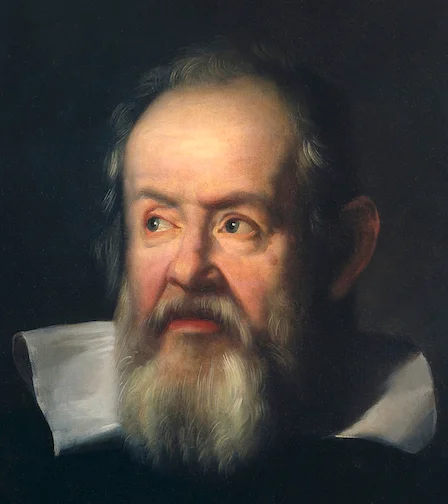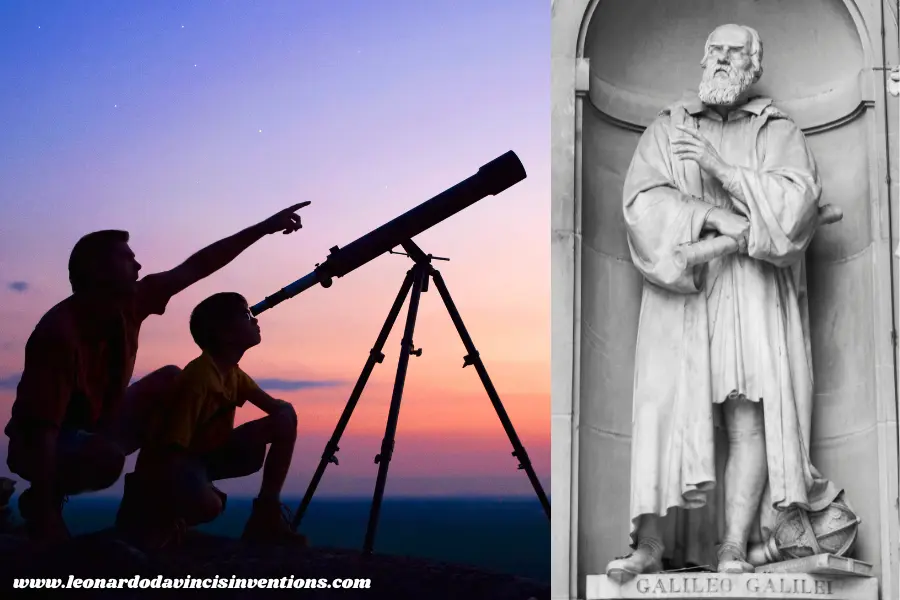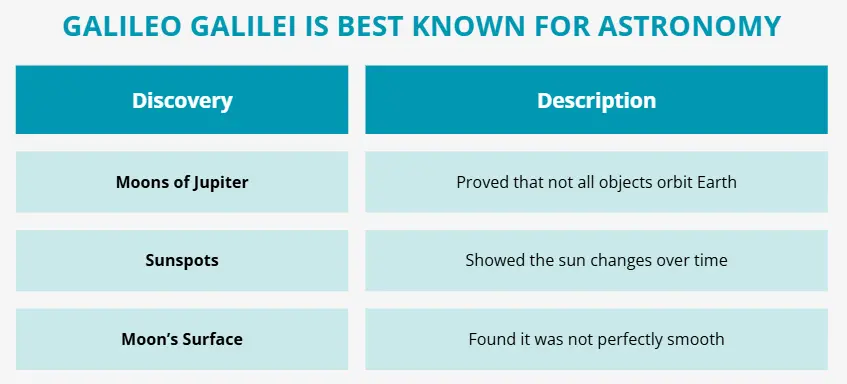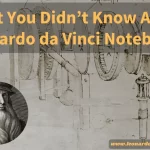
Galileo Galilei is best known for discovering the four largest moons of Jupiter, now called the Galilean moons—Io, Europa, Ganymede, and Callisto in 1610.
This article will explain the key discoveries and inventions that made Galileo famous, so you can understand why his name matters today.
Galileo’s telescopic observations changed how people view the universe. He revealed facts like mountains on the moon and Jupiter’s moons, supporting the idea that not everything orbits the Earth.
These findings stood out when most believed Earth was central to everything. Galileo’s courage to challenge this belief made history.
You will learn about his discoveries in space, work on motion, and inventions, like the improved telescope, which helped spark a new era in science.
Galileo used careful observation and experimentation. His methods changed the world and still influence science today.
What Is Galileo Galilei Best Known for in Astronomy and Telescopic Discoveries
Galileo Galilei changed astronomy with his telescopic observations and discoveries. He used experiments and evidence-based science to challenge traditional beliefs about the universe.
His work laid the foundation for modern observational astronomy.
How Galileo Revolutionized Astronomy With the Telescope
Galileo was the first to use a telescope for scientific night sky observations. He made his improved version of the telescope, allowing him to see things never viewed before.
Instead of trusting old beliefs, Galileo used his instrument to gather evidence and share what he found.
This was a significant innovation during the Renaissance. His detailed sketches and notes helped others in the scientific community understand what he observed.
Galileo’s techniques set new standards for the scientific method and became a model for evidence-based astronomy.
His work supported the idea that science should be based on observations rather than tradition.
Galileo’s use of the telescope led to discoveries that overturned the geocentric (Earth-centered) model of the universe. This started a revolution in science and physics, marking a break from medieval natural philosophy toward modern classical physics.
Discovering the Moons of Jupiter and Other Celestial Bodies
In January 1610, Galileo discovered four moons orbiting Jupiter. These are now called the Galilean moons: Io, Europa, Ganymede, and Callisto.
This was the first time anyone had found celestial bodies revolving around a planet other than Earth.
This discovery provided strong evidence against the ancient geocentric model. It showed that not everything in the heavens revolved around Earth, supporting the idea of heliocentrism, where the planets, including Earth, orbit the Sun.
Along with the moons of Jupiter, he spotted countless new stars in the Milky Way and observed Saturn’s mysterious shape.
His findings are featured in Britannica’s overview of Galileo’s contributions.
Observing Sunspots, Phases of Venus, and Mountains on the Moon
Galileo saw things in the sky that had never been described before. He observed dark spots moving across the Sun, called sunspots, proving the Sun was not perfect and unchanging.
This was shocking in his time.
He saw Venus go through phases like the Moon when he tracked Venus. This showed that Venus orbits the Sun, not Earth, giving more proof for heliocentrism.
Galileo also used his telescope to see mountains and craters on the Moon. He showed that it was rough, not smooth, as people once believed.
These discoveries further evidenced that the heavens were changeable and imperfect, which went against what the Church and many scholars taught.
Galileo’s observations and commitment to the scientific method helped establish him as the “father of modern science.”
What Is Galileo Galilei Best Known for in Physics and the Scientific Method

Galileo Galilei transformed natural philosophy into a precise science focused on observation and mathematical proof.
His studies on motion and gravity and experiments set the groundwork for modern physics and introduced the scientific method.
Uncovering the Laws of Nature and Motion of Falling Bodies
Galileo studied how objects move and fall. He did experiments by dropping objects of different weights from the same height.
He found that if there is no air resistance, all objects fall at the same speed, regardless of their weight.
Before Galileo, most people believed that heavier things fall faster. This belief came from Aristotle’s ideas.
Galileo proved this was not true through experiments. He proved that the laws of nature could be understood by watching how things behave rather than just trusting what people say.
He also used mathematics to describe how objects roll down inclines. His work changed how people describe and predict the natural world.
It helped lay the foundation for later discoveries about gravity and motion by figures such as Isaac Newton.
Challenging Traditional Beliefs With Evidence-Based Science
During Galileo’s time, people often listened to ideas from ancient books rather than experimenting for themselves. Galileo changed this by relying on observations, measurements, and testing ideas with experiments.
He believed that nature follows rules that can be described with mathematics.
He used the scientific method: asking questions, making predictions, testing those predictions, then sharing the results.
This was a big change from older ways of thinking.
This method of seeking evidence, rather than just accepting tradition, led Galileo into conflict with the Catholic Church. When his observations supported the idea that the Earth revolves around the Sun (heliocentrism), the Inquisition put him on trial.
Galileo’s Contributions to Modern-Era Classical Physics
Galileo’s work forms the roots of modern-era classical physics. He introduced ways to measure and describe natural events using straightforward mathematics and numbers.
He advanced the study of the strength of materials, showing how different shapes and sizes react to stress.
He also introduced ideas about inertia, which later became part of Newton’s first law of motion.
Galileo proved that the language of mathematics is the key to unlocking the laws of nature.
Today, people call Galileo the father of modern science because his experiments and ideas changed how people view physics and the scientific method.
His work made it possible to predict how things move or react using clear and testable scientific rules.
What Is Galileo Galilei Best Known for During the Renaissance and His Conflict With the Church
Galileo Galilei made major discoveries in astronomy using a telescope. His evidence supporting heliocentrism and his conflict with the Catholic Church helped spark the Scientific Revolution during the Renaissance.
Supporting Heliocentrism and the Earth Revolving Around the Sun
Galileo is best known for supporting the idea that the Earth revolves around the Sun, which is called heliocentrism. At the time, the traditional belief was geocentrism, which stated that everything in the universe revolved around Earth.
Galileo challenged this old idea by making discoveries with his telescope.
He was the first to report telescopic observations, including seeing the moons of Jupiter, the phases of Venus, and mountains on the Moon. These discoveries showed that not everything orbits Earth.
When he observed the moons of Jupiter, he saw objects moving around another planet, not Earth. This provided direct evidence against geocentrism.
The phases of Venus also proved that Venus orbits the Sun, not Earth. His observational astronomy changed natural philosophy and provided strong evidence for the mathematical language of nature.
The Inquisition, Trial by the Church, and Scientific Revolution
Galileo’s support for heliocentrism put him in conflict with the Catholic Church. The Church supported geocentrism and believed heliocentrism was against both Scripture and tradition.
His views were seen as dangerous and led to a trial by the Inquisition.
In 1633, the Inquisition called Galileo before them. He was ordered to recant his support for heliocentrism.
The trial ended with Galileo being found guilty of heresy and sentenced to house arrest for the rest of his life.
This marked a turning point in science because it showed the risks of challenging traditional beliefs.
This moment during the Renaissance reinforced the need for evidence-based science. Galileo’s use of the telescope for astronomy and his public demonstrations helped drive the Scientific Revolution and innovation.
Galileo as the Father of Modern Science and His Lasting Legacy
Galileo is often called the “Father of Modern Science.” He combined math, physics, and careful experiments, laying the foundation for modern classical physics.
He invented methods for testing hypotheses, focusing on measurable and repeatable experiments.
His discoveries, such as the motion of falling bodies and the laws of nature, helped explain gravity and inertia. He set new standards for the scientific method by insisting on careful observation and evidence.
This changed how people think about the natural world.
Galileo’s legacy as a pioneer in telescopic discoveries, evidence-based science, and challenging traditional beliefs remains strong.
His work continues to inspire those who value innovation and the pursuit of knowledge through observation and experimentation.
Final Thoughts
Galileo Galilei changed how people understood the universe with his discoveries.
He used a telescope to study the skies and found moons around Jupiter.
This challenged the idea that everything revolved around Earth.
Other major discoveries:
- Sunspots on the sun’s surface
- Phases of Venus
- Mountains and craters on the Moon
- Laws about how objects fall and move
Galileo studied gravity and motion by carefully measuring and experimenting.
He worked on inertia and supported the heliocentric model, which helped shape modern science.
He faced opposition from powerful groups who disagreed with his ideas.
Galileo continued to share his findings and set new standards for scientific research.

Galileo Galilei is best known for astronomy, physics, and the motion that changed how we see the world.
His work is still studied and respected in science classes today.
Science continues to move forward, building on Galileo’s methods of observation and testing.
Frequently Asked Questions
Galileo Galilei made key contributions to astronomy and physics, invented the telescope, and changed people’s views of the universe.
His findings challenged old beliefs and shaped modern science.
What is Galileo Galilei famous for?
Galileo Galilei discovered Jupiter’s four largest moons, now known as the Galilean moons.
He was the first to use a refracting telescope for significant astronomical discoveries.
He also studied gravity, motion, and improved the design of scientific instruments.
What is Galileo most remembered for?
He is most remembered for using the telescope to observe the heavens.
His observations showed that the moon was not smooth and that Jupiter had moons orbiting it.
Galileo’s work supported the idea that the Earth orbits the sun.
How did Galileo Galilei impact the world?
Galileo changed how people understood the universe.
His discoveries challenged traditional views about the cosmos and supported the sun-centered model.
He pioneered the experimental scientific method, which is important in science today.
What did Galileo do before he died?
Before he died, Galileo continued studying astronomy and physics, even while under house arrest.
He wrote important works, including “Dialogue Concerning the Two Chief World Systems” and “Discourses and Mathematical Demonstrations Relating to Two New Sciences.”
These writings shared his ideas with future generations.
When did Galileo go blind?
Galileo lost his sight later in life.
He became completely blind around 1642, just a few years before he died.
Who is the father of science?
Many consider Galileo Galilei to be the “father of modern science.”
This is because of his experiments, discoveries, and how he used observation to study nature.
What are 5 facts about Galileo?
- Galileo improved the telescope and used it to study planets and stars.
- He discovered Jupiter’s four biggest moons.
- He observed the rings of Saturn.
- Galileo studied gravity and invented scientific tools.
- He spent his later years under house arrest for his scientific views.
Was Galileo the first to see Saturn’s rings?
Galileo was the first person to observe Saturn through a telescope.
His telescope was too weak to see the full rings, so he described them as “handles” or “ears” on the planet.
Later, stronger telescopes revealed they were rings.
How did Galileo discover the Milky Way?
Galileo studied the Milky Way using his telescope.
He saw that the cloudy band across the sky was made of countless stars.
His telescope observations showed the universe was much larger and more detailed than once believed.
Where is Galileo buried?
Galileo is buried in Florence, Italy.
His tomb is in the Basilica of Santa Croce.



 Leonardo Bianchi,
the creator of Leonardo da Vinci's Inventions.
Thank you for visiting
Leonardo Bianchi,
the creator of Leonardo da Vinci's Inventions.
Thank you for visiting